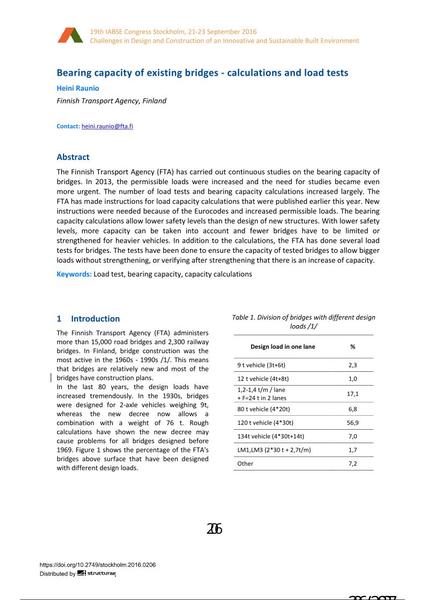Bearing capacity of existing bridges - calculations and load tests

|
|
|||||||||||
Détails bibliographiques
| Auteur(s): |
Heini Raunio
(Finnish Transport Agency, Finland)
|
||||
|---|---|---|---|---|---|
| Médium: | papier de conférence | ||||
| Langue(s): | anglais | ||||
| Conférence: | IABSE Congress: Challenges in Design and Construction of an Innovative and Sustainable Built Environment, Stockholm, Sweden, 21-23 September 2016 | ||||
| Publié dans: | IABSE Congress Stockholm, 2016 | ||||
|
|||||
| Page(s): | 206-213 | ||||
| Nombre total de pages (du PDF): | 8 | ||||
| Année: | 2016 | ||||
| DOI: | 10.2749/stockholm.2016.0206 | ||||
| Abstrait: |
The Finnish Transport Agency (FTA) has carried out continuous studies on the bearing capacity of bridges. In 2013, the permissible loads were increased and the need for studies became even more urgent. The number of load tests and bearing capacity calculations increased largely. The FTA has made instructions for load capacity calculations that were published earlier this year. New instructions were needed because of the Eurocodes and increased permissible loads. The bearing capacity calculations allow lower safety levels than the design of new structures. With lower safety levels, more capacity can be taken into account and fewer bridges have to be limited or strengthened for heavier vehicles. In addition to the calculations, the FTA has done several load tests for bridges. The tests have been done to ensure the capacity of tested bridges to allow bigger loads without strengthening, or verifying after strengthening that there is an increase of capacity. |
||||
